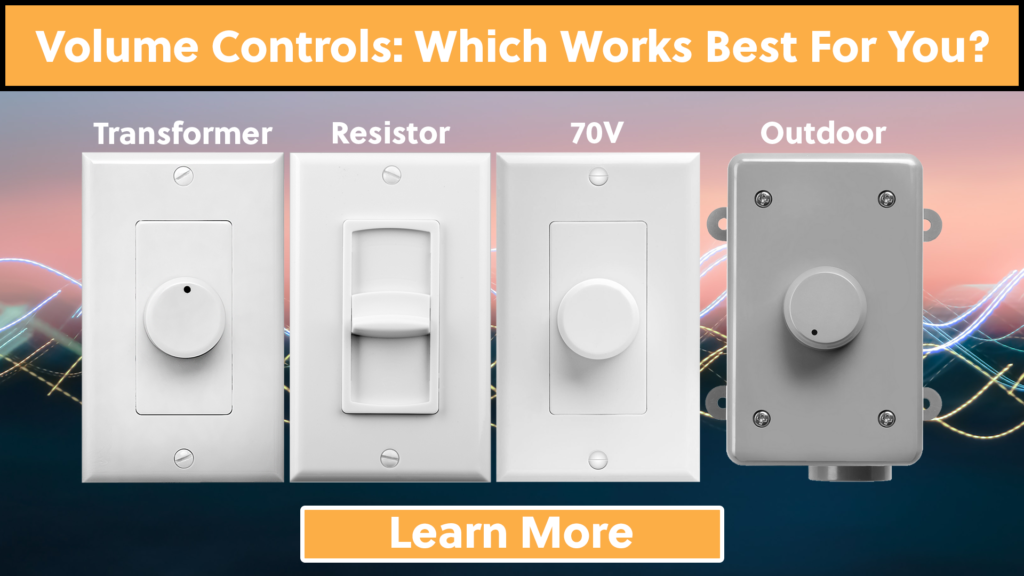
With so many app-based music streaming products available, you may wonder why the old-school approach of a hard-wired system is still a good choice.
Have you ever been frustrated by network failures, out-of-date software, or not having the latest version of Bluetooth or the software your product needs to work? Wireless system technologies are changing all the time, and you will rarely be up to date. Instead of wondering why you have no sound, it might be an idea to go back to a simple hard-wired system—a nice amp and speakers connected by speaker wires with local volume controls. Less to go wrong, more time to listen to music.
Volume controls – What to use and when.

There are several different types of volume control and within those types, there are different ratings. Figuring out which one to use is sometimes difficult. Here are some guidelines:
Three Different types:
- 70V is sometimes referred to as Constant Voltage or High Impedance. Used in 70V systems. Primarily used for commercial systems where the distance to the speakers is greater than 50ft and/or there are many speakers being used.
- 8 Ohm, sometimes referred to as low impedance or a voice-coil system. Used in 8 Ohm systems. Primarily used in systems where the distance to the speakers is typically less than 50ft and high-quality sound is required.
What are the advantages and disadvantages of the three types of systems?
70V
- 70V systems use step-up and step-down transformers to increase the voltage and resistance and lower the current and then reduce it again. This allows the signal to travel much further. The transformers, however, add a little distortion and reduce the frequency response, and are not regarded as audiophile. But you can connect hundreds of speakers to one amp.
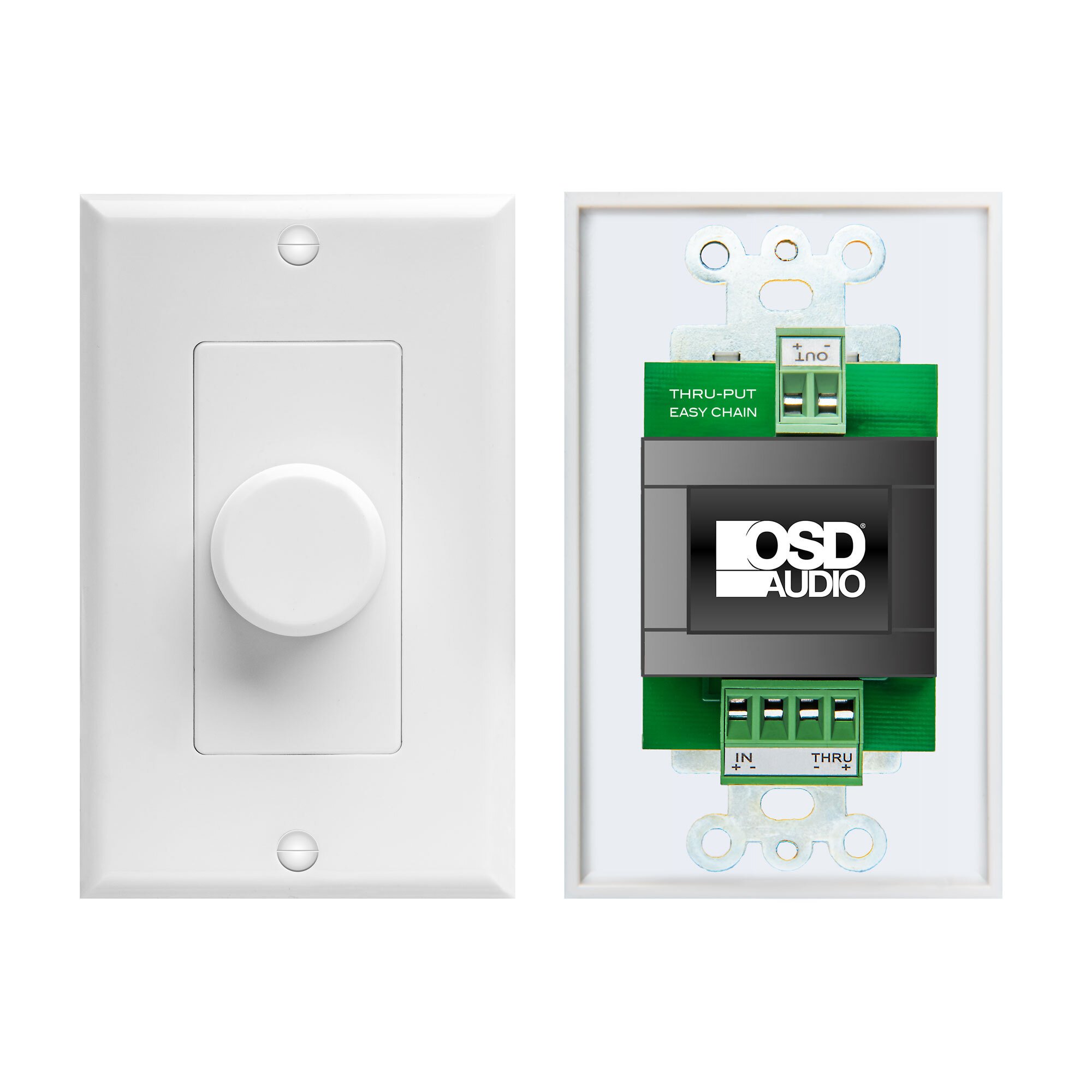
8 Ohm – 2 Types
- Transformer Based
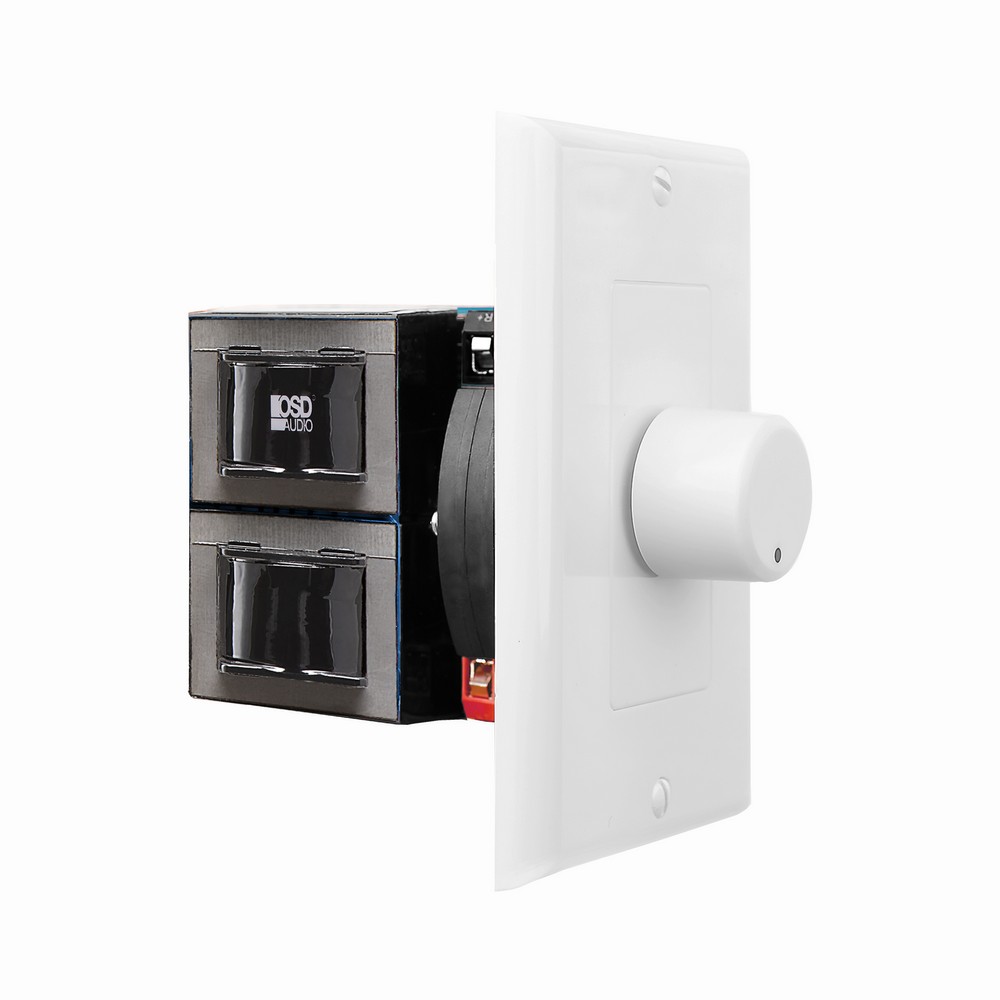
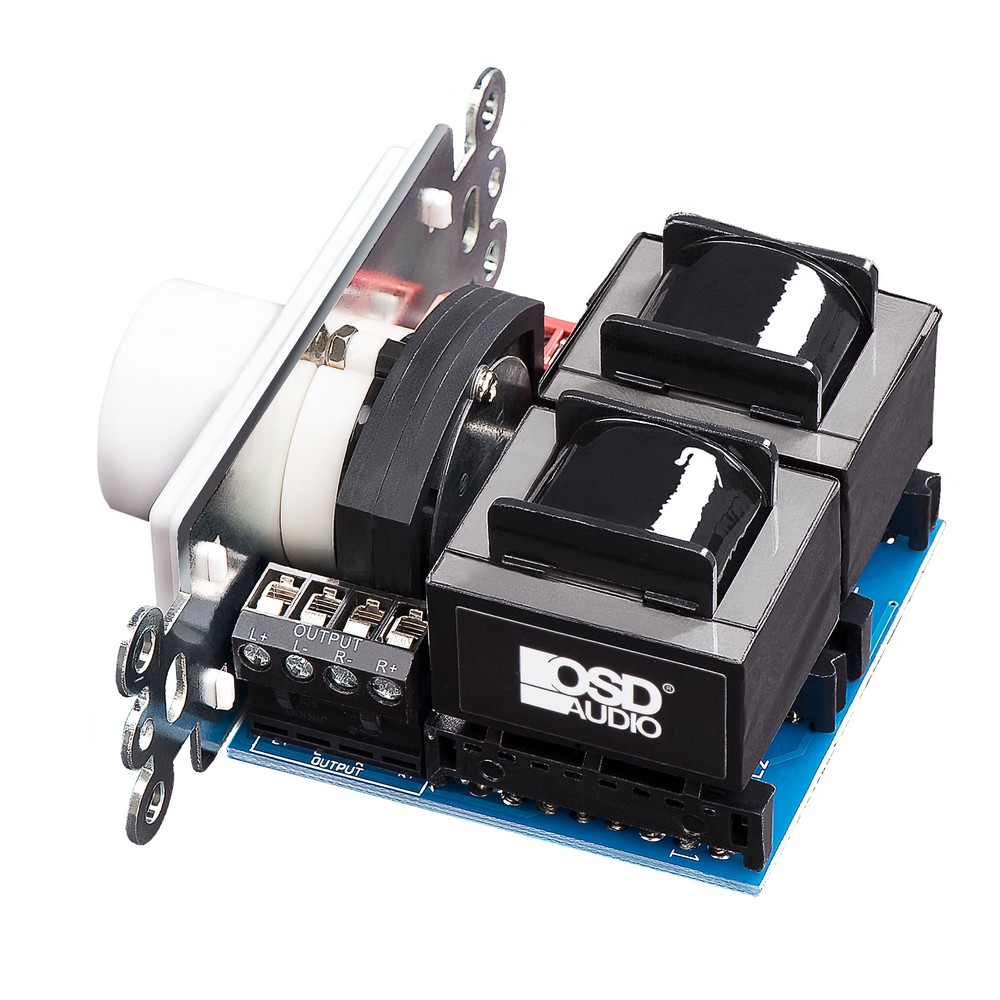
- Resistor Based
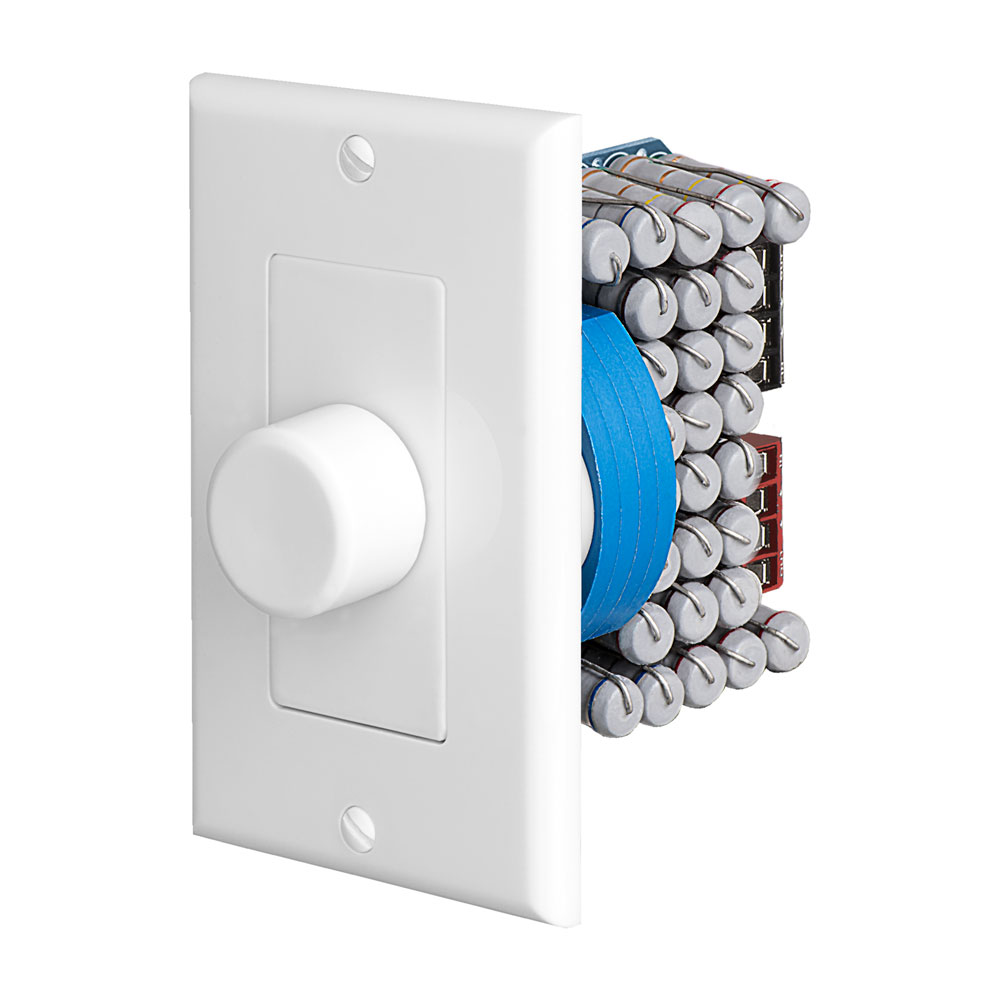

- 8 Ohm systems have lower impedance and voltage and higher current. This is great for frequency response and low distortion, and the sound quality is more audiophile. But the length of speaker wire is less, and fewer speakers can connect to one amp.
Your application or system design will determine which type to use.
For applications where there are many speakers and long distances, the 70V route is the way to go. 70V volume controls are available with different ratings – 25W, 50W, and 100W. These ratings determine how many 70V speakers you can connect to the volume control and how much power each speaker can receive. For example, you can connect five speakers tapped at 5W to a 25W volume control, or 25 speakers tapped at 1W. If more power (louder sound) is required, a 100W volume control could be used with 2 speakers tapped at 50W.
Note the added feature available from OSD 70V volume controls of pass-through terminals. This feature speeds-up installs, reduces costs, and presents a much more professional look.
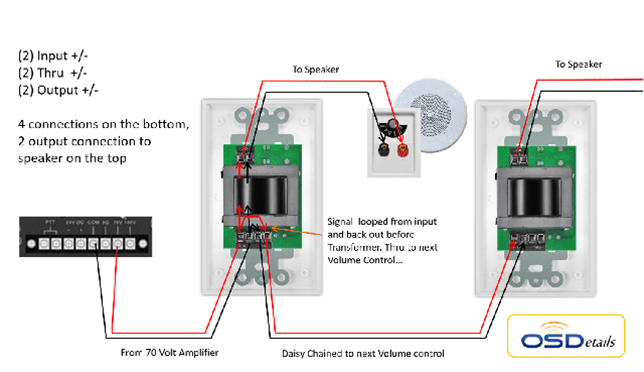
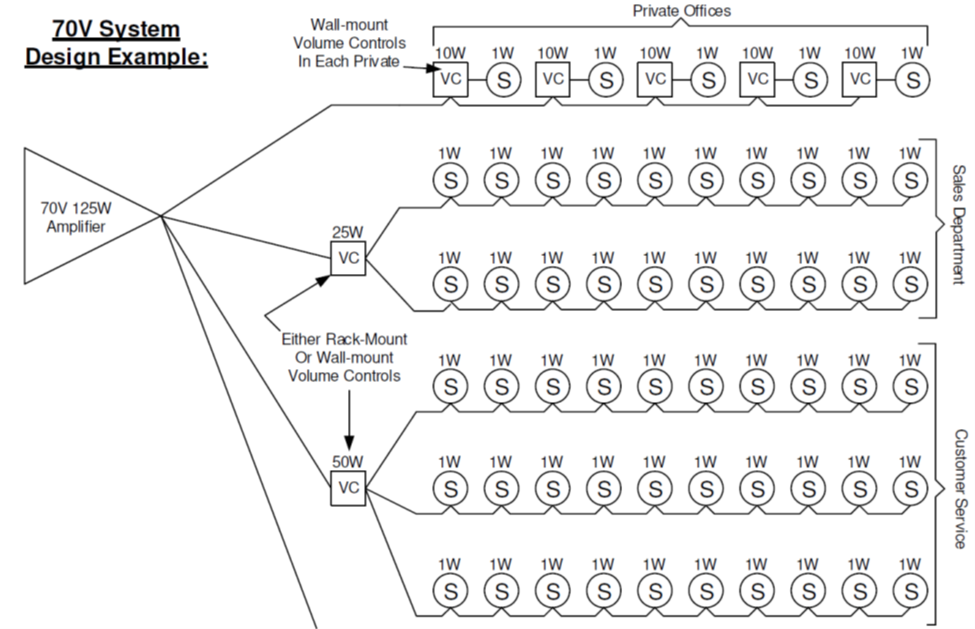
For applications where the distances are shorter and there are fewer speakers, then an 8 Ohm system is the right choice, delivering better sound quality.
8 Ohm volume controls also come with different ratings and are available in two types:
Transformer-based and Resistor-based.
- Transformer-based volume controls are more flexible and offer impedance matching as well as different power ratings. Impedance matching means you can run multiple pairs of speakers from a stereo amplifier or receiver. With multiple speakers, the impedance usually drops too low. Transformer-based volume controls have switches that allow you to correct for this. High-power transistor-based volume controls are also available and can handle up to 300W, ideal for large spaces or outdoor areas. Different options like screwless faceplates, sliders, and knobs—all available in different colors—allow for plenty of choices.
- For the highest sound quality, resistor-based volume controls have lower distortion and an extended frequency response. They behave more like the traditional potentiometers or volume controls you would find on an amplifier or receiver, with variable resistance coming from the resistors on the rear of the volume control. They can be used with multi-channel 8-Ohm amplifiers or with impedance matching speaker selectors connected to a stereo amplifier. Suitable for use with amplifier power of up to 150W and available with sliders or knobs.
If you want to future-proof your whole-house music system, you should think carefully about the old-school approach, and we can help you with that.
